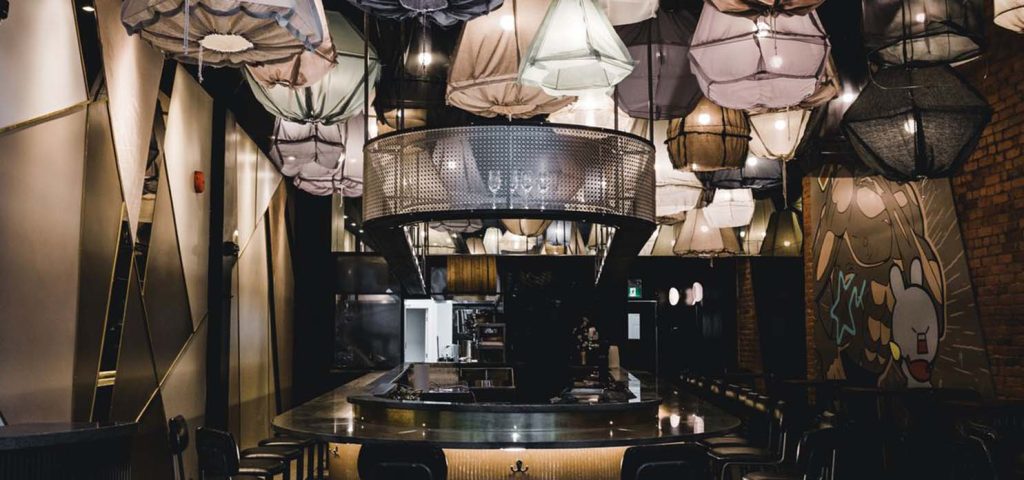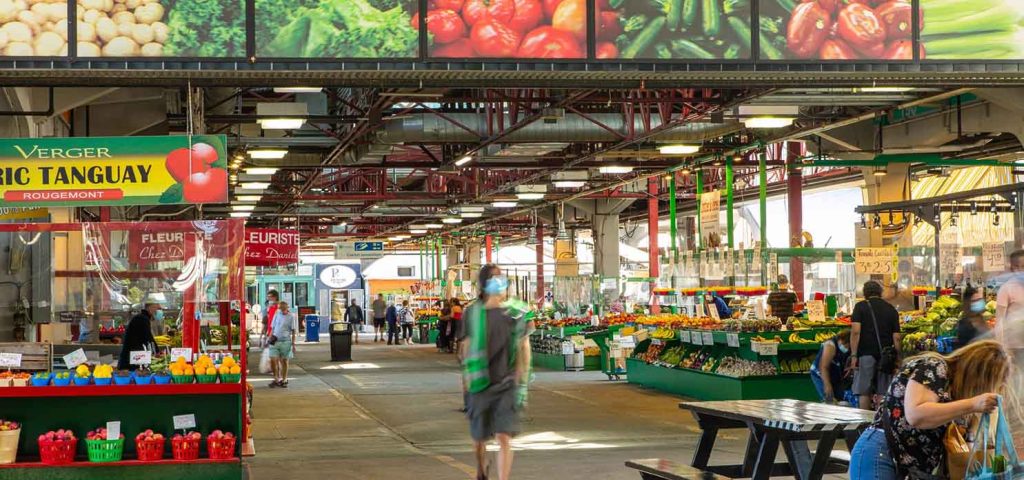In this multicultural nation of Canada, Montréal stands as a radiant gem. Known not only for its French heritage and historic architecture, this city has also earned its title as the “Gastronomic Capital of North America.” Today, let’s explore two of Montréal’s most vibrant culinary hubs—Little Italy and Chinatown—to uncover a flavorful map of this city where cultures intersect and taste buds collide.
I. Montréal’s Culinary Geography: A Flavor Born from Cultural Fusion
Montréal is the largest city in Quebec and the second-largest French-speaking city in the world. Its cultural and linguistic diversity is astonishing, forming the foundation of the city’s eclectic food scene. Italian and Chinese immigrants arrived in the early and mid-20th century, bringing along not just recipes from their homelands but also adapting and evolving them through the lens of local culture—giving rise to the unique flavors of today’s Little Italy and Chinatown.
II. A Flavor Journey Through Little Italy: From Espresso to Truffle Oil
1. Morning on Boulevard Saint-Laurent: An Italian Espresso Start
The heart of Little Italy truly comes alive along Boulevard Saint-Laurent, where mornings begin with a blend of tradition and aroma. Stepping out of Jean-Talon Metro Station, you’re immediately embraced by the scent of freshly brewed espresso drifting through the cool morning air. Locals stroll casually, some on their way to morning errands, others simply enjoying the neighborhood’s comforting pace.
Recommended Café: Café Olimpico
With a 50-year legacy, Café Olimpico is not just a café—it’s an institution, a meeting place, and a cultural hub. Here, the espresso is strong, the crema thick, and the service warm and efficient. Order a double shot with a flaky, golden-brown croissant and claim a spot beneath the classic sidewalk umbrellas. As you sip and observe, elderly locals exchange stories in lilting Italian, while younger generations greet each other with cheerful familiarity. It’s a taste of Italy nestled within the heart of Montréal—a reminder that time can slow down when the morning starts just right.
2. The Sensory Feast of Jean-Talon Market
Just a few minutes’ walk from your morning coffee, Jean-Talon Market opens up like a treasure trove of color, sound, and scent. This bustling open-air market—one of the largest in North America—is where Montréal’s Little Italy pulses with daily life. Stalls brim with vibrant seasonal produce, sun-ripened tomatoes, piles of fresh herbs, jars of local honey, cured meats, and hand-rolled pasta.
Recommended Stall: Fromagerie Hamel
Among the highlights is Fromagerie Hamel, a gourmet cheese stall that embodies the best of Italian and Québécois dairy traditions. The selection spans tangy Gorgonzola to smooth, creamy ricotta, with each cheese bearing subtle notes shaped by local ingredients and aging processes. The familiar Parmigiano-Reggiano surprises even seasoned cheese lovers with its rich depth and texture. Staff offer generous samples and expert tips on pairing—whether it’s a Chianti or a local Pinot Noir. Don’t be surprised if you walk away with a tote full of cheese, some handmade crackers, and a newfound love for artisanal dairy.
3. The Ultimate Italian Dinner Experience
After a day of market browsing and relaxed urban exploration, dinner in Little Italy offers a truly immersive cultural experience. As the sun sets, Boulevard Saint-Laurent takes on a warm, golden hue. Lights flicker on inside cozy trattorias, laughter spills onto the sidewalk patios, and the aromas of garlic, basil, and wood-fired dough drift through the air.

Recommended Restaurant: Bottega Pizzeria
At Bottega Pizzeria, authenticity meets elegance. The family-run restaurant serves Neapolitan-style pizza made according to strict Italian tradition, with ingredients imported from Italy and a dough that ferments for over 24 hours. The pizza is blistered to perfection in a stone oven, the crust puffed and slightly charred, giving it that unmistakable smoky aroma. The sauce is bright and fresh, made from San Marzano tomatoes, and toppings like burrata, prosciutto di Parma, or truffle oil elevate each bite. Start your evening with an Aperol Spritz or a Negroni, and let the warm Mediterranean ambiance, candlelit tables, and Italian chatter transport you straight to Naples.
III. A Culinary Cruise Through Chinatown: Tradition Meets Innovation
1. A Gentle Morning Under the Archway: Starting with Congee
Montréal’s Chinatown is marked by a golden traditional Chinese archway, a symbol of prosperity and protection for the community. In the early morning, this area is filled with locals enjoying a quiet start to their day. The aroma of congee (rice porridge) fills the air, and fried dough sticks (zhaliang) are served fresh, offering warmth and comfort. It’s the perfect way to begin a day filled with energy and anticipation.
Recommended Restaurant: Beijing Restaurant
One of the best spots to experience this iconic breakfast is Beijing Restaurant. Their boat-style congee, rich in flavor and silky in texture, pairs wonderfully with crispy fried dough sticks. The dish is complemented by savory ingredients like pickled vegetables, preserved eggs, and pork floss. The restaurant also serves popular dim sum items like shrimp dumplings (har gow) and chicken feet (feng zhua), offering a satisfying taste of Cantonese cuisine.
2. A Spicy Noon: The Rise of Sichuan Cuisine and Hot Pot
In recent years, Montréal’s Chinese food scene has expanded to include a variety of regional Chinese cuisines, with Sichuan food taking center stage, especially among younger food lovers. Known for its bold, spicy flavors and distinctive numbing sensation from Sichuan peppercorns, this cuisine has rapidly gained a loyal following.
Recommended Restaurant: La Maison Foo
La Maison Foo is a cozy, authentic Sichuan hot pot restaurant that takes you straight to Chengdu with its welcoming ambiance and rich, flavorful offerings. Guests can choose between a spicy or mild soup base, which serves as the foundation for various hot pot ingredients, including thinly sliced beef, tofu, lotus root, and vegetables. Their dry pot dishes, like the spicy dry pot shrimp and the mouthwatering “fuqi feipian” (spicy beef offal salad), offer a unique combination of textures and heat that will excite your taste buds.
3. Summer Nights and Mooncake Light: Chinatown’s Night Market Charm
When summer arrives and during the Mid-Autumn Festival, Chinatown’s streets are transformed by vibrant night markets. This is when the neighborhood truly comes to life, with countless food stalls lining the streets, offering everything from sugar-coated hawthorn skewers (tanghulu) to takoyaki (Japanese octopus balls), and an array of sweet and savory Asian desserts.
Recommended Stall: Sweet Dynasty
Sweet Dynasty is a must-visit stall for anyone with a sweet tooth. Specializing in classic Cantonese desserts, their mango pomelo sago is a refreshing treat with tropical fruits and coconut milk. For something richer, try the silky black sesame soup, which has a deep, earthy flavor. For those seeking a cooling finish to their meal, the red bean ice is a perfect choice. These desserts, paired with the lively atmosphere of the market, make for a memorable end to your Chinatown adventure.
IV. Contrast and Convergence: When Parmesan Meets Soy Sauce
Though Little Italy and Chinatown differ greatly in style, their stories intersect. At Jean-Talon Market, for example, it’s common to see Vietnamese spring rolls sold next to Italian sausages. In Chinatown, fusion restaurants serve dishes like risotto with Chinese BBQ pork.
Recommended Spot: Jiao Dim Sum Bar
This creative dim sum bar exemplifies East-meets-West innovation—pizza-flavored soup dumplings, black truffle beef shumai, and handcrafted cocktails with Asian notes deliver a unique culinary surprise.

V. Beyond Food: Cultural Landscapes in the City’s Tapestry
Food never exists in a vacuum—it’s deeply entwined with the culture and history of a place.
The Community Spirit of Little Italy
In Little Italy, elderly residents play chess in the park while parents take children through the market. This is not just a food destination but a living, breathing community. Each summer during the Italian Week Festival, the entire street transforms into a carnival of food stalls and live opera performances—a romantic celebration of heritage.
The Multicultural Mosaic of Chinatown
Chinatown is home to not only Chinese restaurants but also Vietnamese, Thai, and Malaysian spots. During Chinese New Year, lion dances, firecrackers, and red lanterns light up the neighborhood. The local cultural center and traditional medicine shops preserve the wisdom and healing practices of the East.
VI. Travel Tips: Planning Your Culinary Exploration
- Best Seasons to Visit: Spring and fall offer mild weather and vibrant street activities.
- Transportation: Jean-Talon Station serves Little Italy, while Place-d’Armes Station connects to Chinatown—both are perfect for walking tours.
- Budget Tips: Meals in Chinatown are generally affordable (CAD 10–20 per person). Some upscale restaurants in Little Italy are pricier—reservations recommended.
- Language Notes: Most restaurant staff speak English. In Chinatown, many also speak Chinese; in Little Italy, you’ll often hear French and English.
- Don’t Miss These Festivals:
- Italian Week Festival in August (Little Italy)
- Chinese New Year Parade in January or February (Chinatown)
VII. In Montréal, Food Is a Way of Life
In Montréal, food is more than sustenance—it’s a form of cultural expression, a tribute to heritage, and a way of building community. The aroma of Little Italy and the warmth of Chinatown mirror the city’s depth and diversity.
Whether you’re picking out cheese at Jean-Talon Market or biting into a barbecue bun at a night market, you’ll realize that the true soul of Montréal lies in its flavors—in the ordinary yet profoundly beautiful moments of everyday life.
